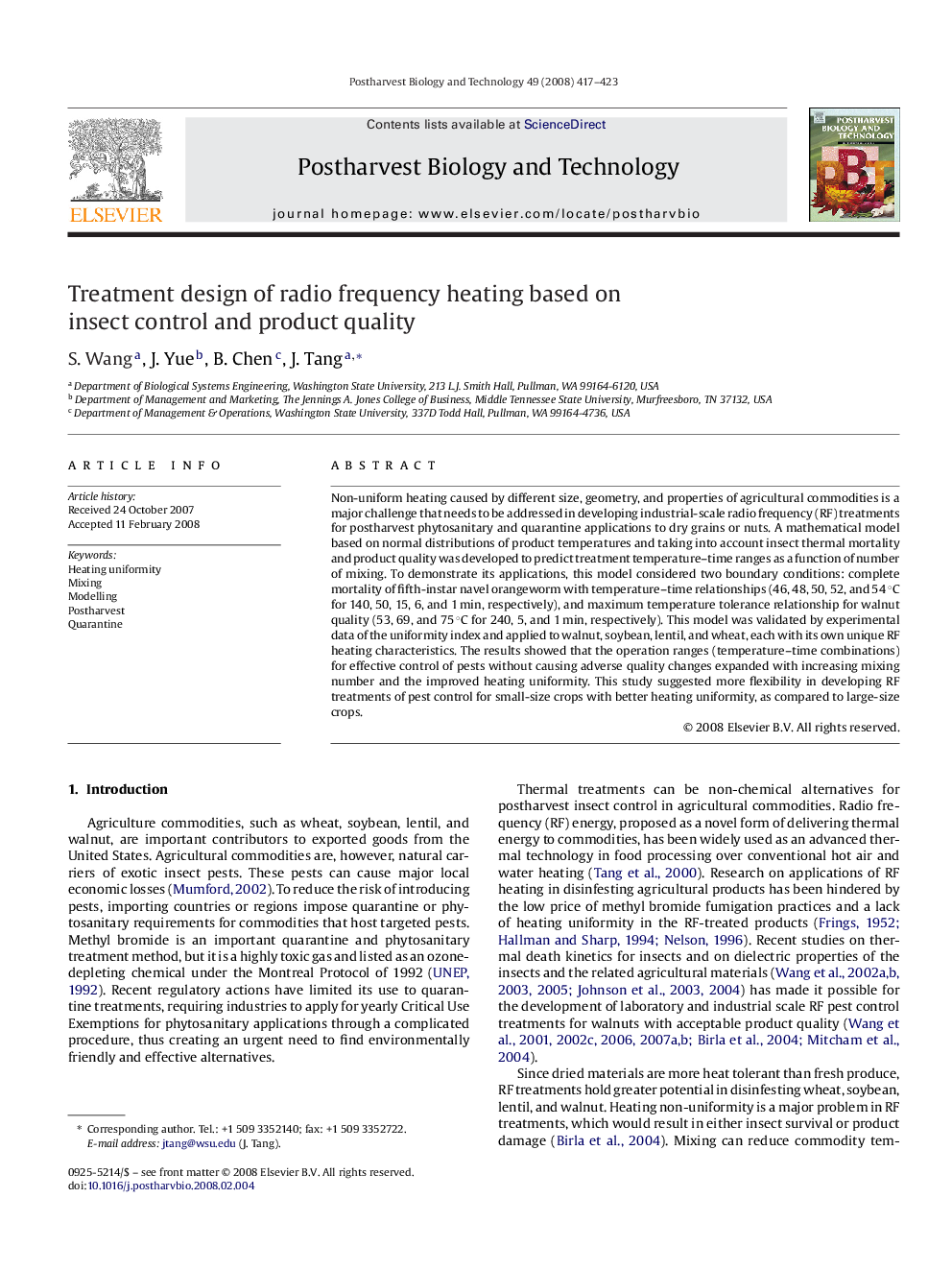| Article ID | Journal | Published Year | Pages | File Type |
|---|---|---|---|---|
| 4519421 | Postharvest Biology and Technology | 2008 | 7 Pages |
Non-uniform heating caused by different size, geometry, and properties of agricultural commodities is a major challenge that needs to be addressed in developing industrial-scale radio frequency (RF) treatments for postharvest phytosanitary and quarantine applications to dry grains or nuts. A mathematical model based on normal distributions of product temperatures and taking into account insect thermal mortality and product quality was developed to predict treatment temperature–time ranges as a function of number of mixing. To demonstrate its applications, this model considered two boundary conditions: complete mortality of fifth-instar navel orangeworm with temperature–time relationships (46, 48, 50, 52, and 54 °C for 140, 50, 15, 6, and 1 min, respectively), and maximum temperature tolerance relationship for walnut quality (53, 69, and 75 °C for 240, 5, and 1 min, respectively). This model was validated by experimental data of the uniformity index and applied to walnut, soybean, lentil, and wheat, each with its own unique RF heating characteristics. The results showed that the operation ranges (temperature–time combinations) for effective control of pests without causing adverse quality changes expanded with increasing mixing number and the improved heating uniformity. This study suggested more flexibility in developing RF treatments of pest control for small-size crops with better heating uniformity, as compared to large-size crops.
